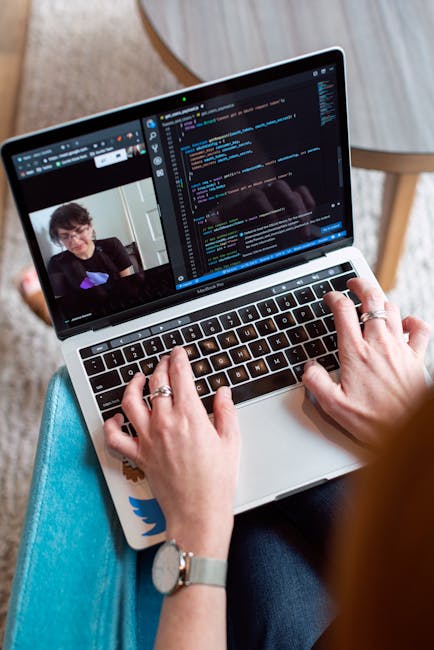
Introduction to Vibe Coding
In February 2025, computer scientist and former OpenAI co-founder Andrej Karpathy introduced the term "vibe coding" in a post on X, describing it as a process where developers "fully give in to the vibes, embrace exponentials, and forget that the code even exists". This AI-assisted coding style relies on large language models (LLMs) like ChatGPT, Claude, or specialized tools such as Cursor and GitHub Copilot to transform natural language prompts into functional code. Unlike traditional programming, vibe coding emphasizes iterative experimentation, allowing developers to focus on high-level ideas rather than syntax or structure.
How Vibe Coding Works
Vibe coding involves a conversational workflow where developers describe their project goals in plain language to an AI tool. The AI generates code, which the developer reviews and refines through further prompts. For instance, a prompt like "Create a colorful, interactive web animation that responds to music" could produce a working prototype in JavaScript or React. The developer then iterates, requesting tweaks or fixes, often accepting AI suggestions without deeply analyzing the code. This hands-off approach distinguishes vibe coding from traditional AI-assisted coding, where developers meticulously review and edit outputs.
The workflow typically follows these steps:
Select an AI Tool: Choose a platform like Replit, Cursor, or Claude Code based on project needs or ease of use.
Define the Vision: Provide a clear, detailed prompt outlining the desired functionality.
Refine the Output: Review the AI-generated code, request changes, and iterate until the result aligns with the vision.
Test and Deploy: Perform final checks before deploying the application.
Benefits of Vibe Coding
Vibe coding democratizes software development, enabling non-coders to create functional prototypes. Kevin Roose, a New York Times journalist, used vibe coding to build a "LunchBox Buddy" app that suggested meals based on fridge contents, highlighting its accessibility for amateurs. For experienced developers, vibe coding accelerates prototyping and allows exploration of unfamiliar languages or frameworks. Y Combinator reported that 25% of its Winter 2025 startup cohort had codebases that were 95% AI-generated, showcasing its impact on rapid development.
The approach aligns with agile methodologies, promoting quick prototyping and iterative feedback. It reduces the need for extensive coding knowledge, making it ideal for "software for one"—personalized tools tailored to individual needs.
Tools for Vibe Coding
Several AI tools are tailored for vibe coding:
Claude Code: Optimized for coding in IDEs like VS Code, it supports multi-file editing and includes safeguards to prevent unintended code changes.
GPT-5: OpenAI’s latest model excels in agentic coding, translating natural language prompts into robust codebases.
Cursor: An IDE with an integrated AI agent that explains changes and supports bug fixes, ideal for beginners and professionals.
Lovable: Focuses on conversational AI coding with integrations for OpenAI and Anthropic APIs.
v0 by Vercel: Specializes in generating web apps, often paired with other tools for UI development.
Opal by Google: A beginner-friendly tool with a visual interface, leveraging Google’s AI ecosystem.
Limitations and Challenges
Despite its promise, vibe coding has notable drawbacks:
Code Quality: AI-generated code may lack optimization, leading to performance issues or bugs, especially in complex projects.
Security Risks: Without thorough review, AI code can introduce vulnerabilities, as seen in a case where a vibe-coded SaaS app was easily exploited.
Debugging Difficulties: The dynamic, AI-generated code can be hard to debug due to its lack of structured architecture.
Maintainability: Codebases created through vibe coding may become "legacy code" if not properly documented, complicating updates.
Task Complexity: While effective for simple tasks, vibe coding struggles with novel or multi-file projects requiring deep integration.
Critics like Andrew Ng argue that the term "vibe coding" misleads by oversimplifying the role of software engineers, who must still ensure code reliability. Simon Willison emphasized that vibe coding is risky for production systems, where code quality and understandability are critical.

Real-World Applications
Vibe coding has gained traction in startups and hobbyist projects. For example, Y Combinator startups have used it to build MVPs quickly, testing market viability with minimal resources. Hobbyists have created games, browser extensions, and small apps, such as a custom Wordle variant, with minimal coding knowledge. Professional engineers are also adopting vibe coding for rapid prototyping, though they often combine it with manual reviews for production-grade software.
The Future of Vibe Coding
Vibe coding is part of a broader shift toward AI-driven development, with trends like multimodal programming (using voice, text, and visuals) and "VibeOps" (AI-automated operations) emerging. As AI tools improve, the barriers to software creation will continue to drop, potentially making everyone a developer. However, human oversight remains essential to address security, quality, and complexity challenges. The evolution of vibe coding will likely involve hybrid approaches, where AI handles repetitive tasks, and humans focus on creative problem-solving.
Conclusion
Vibe coding represents a paradigm shift, making software development more accessible and dynamic. While it empowers rapid prototyping and experimentation, its limitations in security, maintainability, and complexity require careful consideration. By combining AI’s capabilities with human expertise, vibe coding could redefine how we build software, bridging the gap between ideas and execution.



